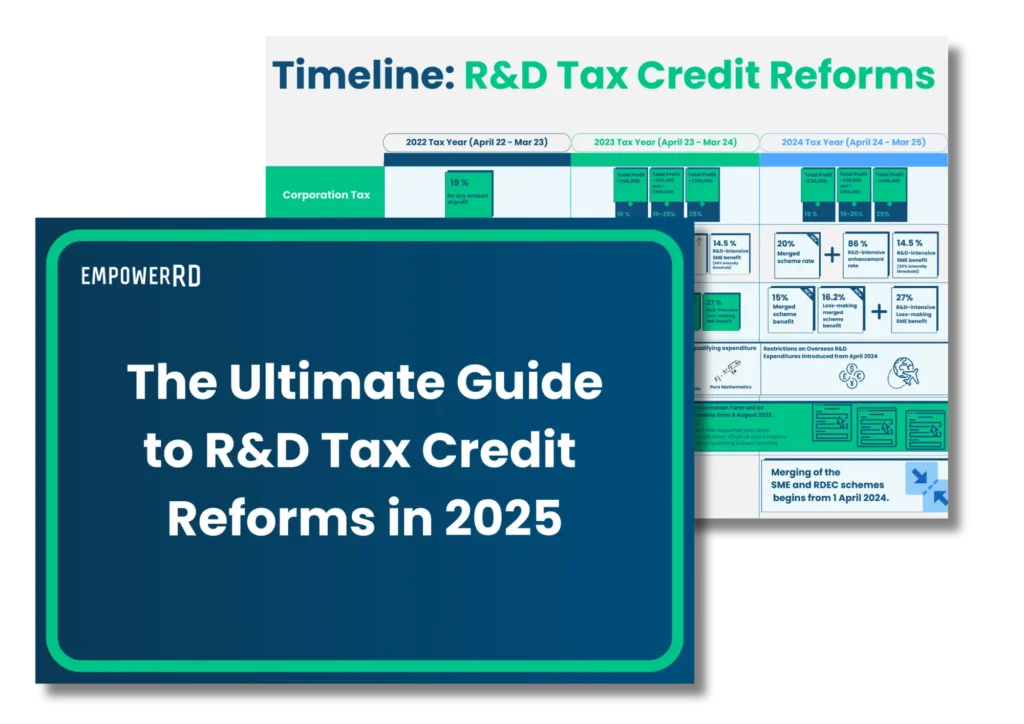Since the Additional Information Form (AIF) came in last year, the inclusion of a narrative (referred to as a “technical narrative”) has now become a requirement for all R&D tax credit claims. While the submission of a narrative was not obligatory pre-AIF, a seasoned R&D advisor would never file a claim without it. Why? It describes your R&D work and gives HMRC the context they need to understand and justify the costs you’ve claimed. Without one, you’re treading dangerous waters.
In the past, it might have been acceptable to submit a small claim without supporting evidence, but this is no longer the case. With fraudulent claims increasing year-on-year, HMRC has cracked down on abuse of the R&D incentive. A claim without a narrative will almost always be rejected now.
What is a technical narrative?
The narrative is a series of short paragraphs that you include in your R&D tax claim submission pack. Its job is to provide an overview of the R&D you’ve undertaken and to justify the total qualifying expenditure for the claim period.
What should I include in the technical narrative?
To convince HMRC of technological innovation for the R&D projects you’ve undertaken over the financial period that you’re claiming for, you should include the following in your technical narrative:
- The technological advances that your company has sought.
- The challenges and technical obstacles your company faced.
- The resources used.
- The outcomes achieved and/or technological uncertainties overcome.
Once you’ve covered these four points, you’re most of the way there!
What about the inspector reading the narrative?
The HMRC inspector reading the narrative will be time-poor and unlikely to have significant technical or scientific expertise. To overcome this, it’s important to translate complex technical details into terms that HMRC inspectors will understand. If it’s too long or convoluted, there’s a chance of more questions from HMRC. A specialist advisor should have expert technical writers to help you overcome this hurdle.
Why is my input needed to make it a compelling narrative?
Your input is essential for a successful technical narrative because you (and your team) know more about your R&D projects than anyone else! And it’s your advisor’s job to take this information and build a robust narrative capable of withstanding HMRC scrutiny. Even so, writing a compelling narrative for HMRC inspectors is challenging and can drain hours of your team’s time, especially when working with traditional advisors who insist on lengthy interviews and painfully long email chains. And it’s often the reason why some companies leave the narrative out of their submission pack altogether.
What about at EmpowerRD?
Building a narrative doesn’t need to take 40 hours out of your team’s valuable time! At EmpowerRD, we have a quick and easy 3 step process for building a robust technical narrative:
- We have a short kick-off call to identify your projects.
- Through our platform, you answer 4 open-ended questions. Throughout this process, we’re always on hand to answer any questions you may have.
- Our team of tax specialists will draft the narrative and ask for any potential additional information from you. Once written up to make it compliant with HMRC, you will review it before it’s submitted.
It’s that simple!
Robust technical narrative = Compliant R&D tax credit claim
With HMRC’s top priority being tackling fraud and improving compliance (read our latest blog on error and fraud in the scheme to learn more about the measures they’ve put in place), the narrative has taken on far greater significance. Ensure you’ve got the evidence you need to get that much-deserved cash injection! To learn more about how we build R&D tax credit claims, get in touch with one of our experts today.












